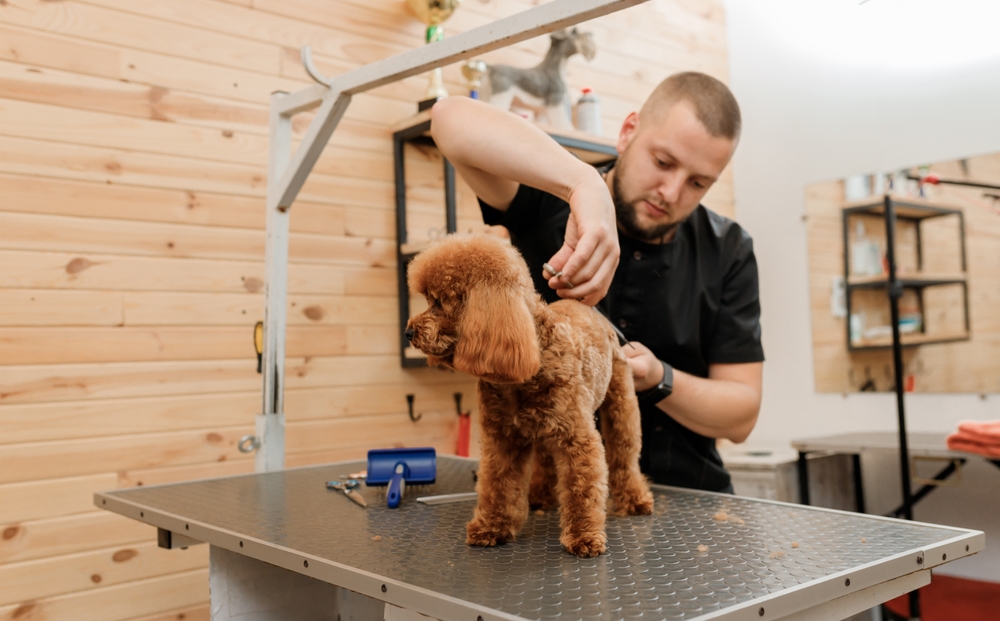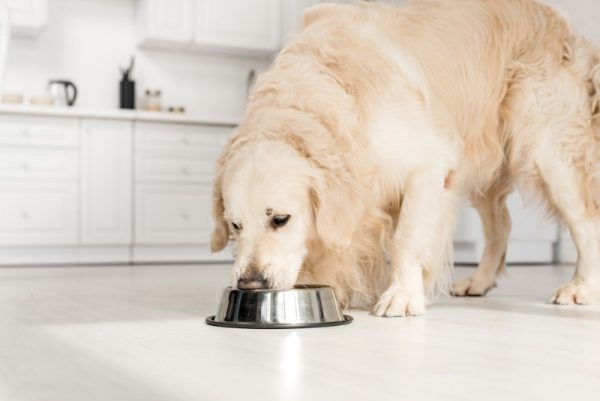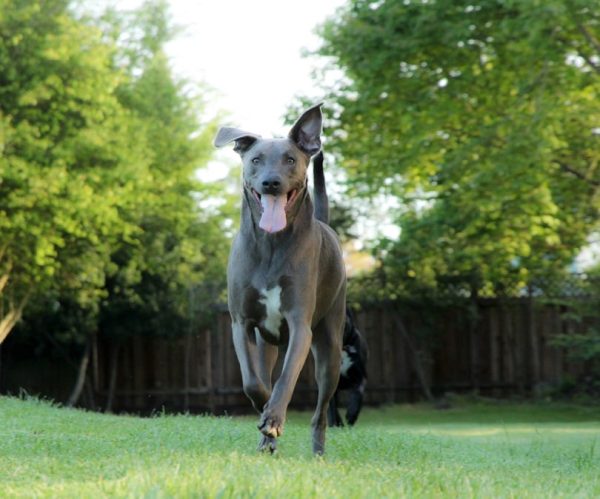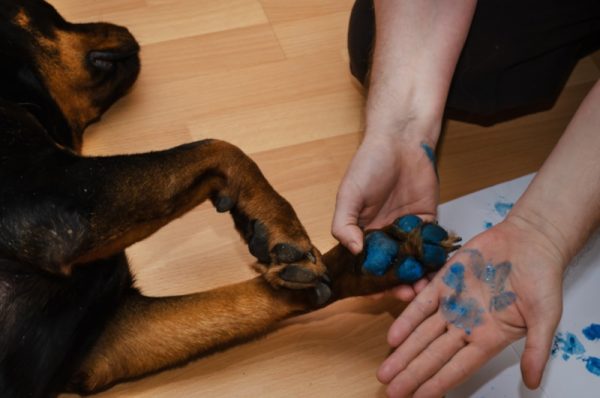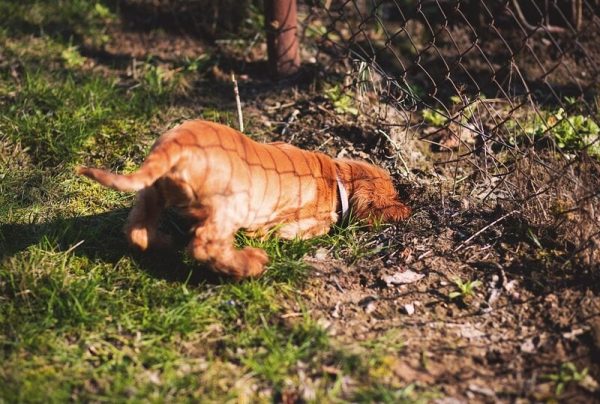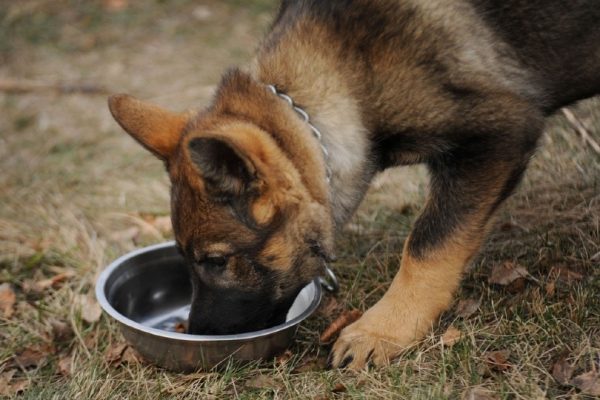In this article
View 3 More +A sanitary trim, also sometimes called a hygiene trim or sanitary clip, is a procedure used by groomers to help dogs and cats maintain cleanliness around their sensitive areas. Sometimes, our pet’s fur length or anatomy makes it difficult for them to stay clean after toileting, so these trims may become necessary to avoid unpleasant odors and staining while also reducing the risk of infection.
Read on to learn more about the sanitary trim, including how to know if your dog needs one and how to perform it at home.

What Is a Sanitary Trim?
Like humans, our pets need proper hygiene to stay healthy, smell fresh, and remain comfortable. The sanitary trim is meant to keep hair short in the areas that often get soiled when an animal is toileting, including the bottom, genitals, and abdomen.
- Preventing infections. If the fur in your dog’s genital areas becomes matted or tangled and then gets soiled by feces or urine, it can become a breeding ground for bacteria.
- Avoiding tangles. If the fur around a dog’s genital area is left untrimmed, it can easily form tangles and knots. These knots are made even more of a nuisance when they get bound by your pup’s feces and urine.
- Avoiding messes. It’s only a matter of time before the crusted-on feces and urine on your dog’s fur makes its way onto you, your carpets, or your furniture.
- Reducing odors. Untrimmed hair around your dog’s sensitive areas traps unpleasant odors from urine and feces, which will follow your pup wherever they go.
- Maintaining hygiene. Sanitary trims are essential for intact female dogs when they go into heat as they may bleed or produce extra discharge that can get stuck in their fur.

Does My Dog Need a Sanitary Trim?
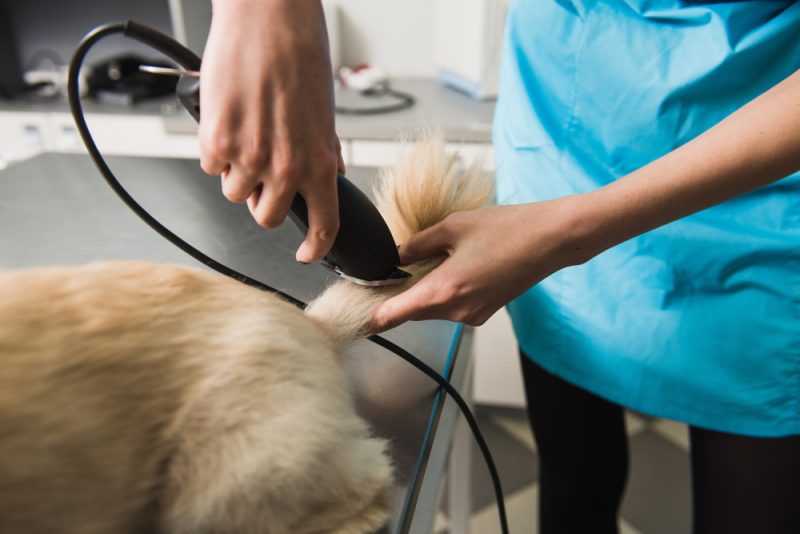
There are several situations in which a sanitary trim would be considered necessary not only for your pup’s comfort but yours as well.
- Their fur is matting or tangling around their anus
- There’s a strong, unpleasant odor coming from your pet’s private area
- Your female dog is in heat and producing extra discharge
Do All Breeds Require Sanitary Trims?
Sanitary trims are not necessary for every dog. Long-haired breeds such as Yorkshire Terriers, Shih Tzus, and Havanese are great candidates for these trims as their fur will naturally get in the way when they’re doing their business. However, sometimes, even short-haired dogs get messy when toileting and can benefit from getting a sanitary trim now and then.
You know your pup and their toileting habits and hygiene best. If your dog is matting around their genitals, smelling awful, or carrying around stuck-on feces on their back end, they could probably use a sanitary trim.

How to Give Your Dog a Sanitary Trim at Home
While some grooming jobs should be left to the professionals, sanitary trims are relatively easy to do yourself if you have the right tools. We recommend using dog hair clippers with a #10 blade. If your pup has sensitive skin in the area you’ll be trimming, use a short attachment comb to keep them safe and comfortable.
We also recommend having yummy dog treats nearby to reinforce your pup and a second set of hands if you’re a little nervous about tackling the trim on your own.
Step 1: Prep
Before beginning the sanitary trim, prep your pooch by carefully brushing or cutting out any tangles or mats in the genital area.
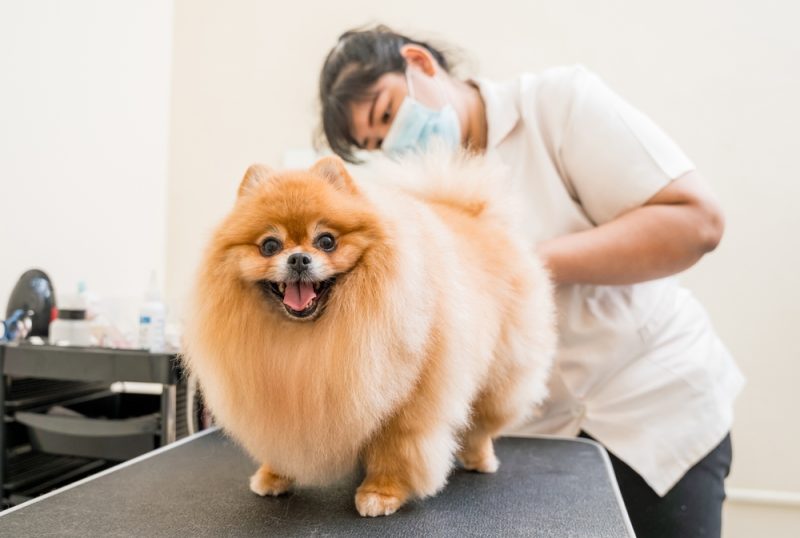
Step 2: Harness
Tether your dog on a hard surface (like a countertop) with their harness or leash so they stay in place during their haircut. A belly strap is also an option.
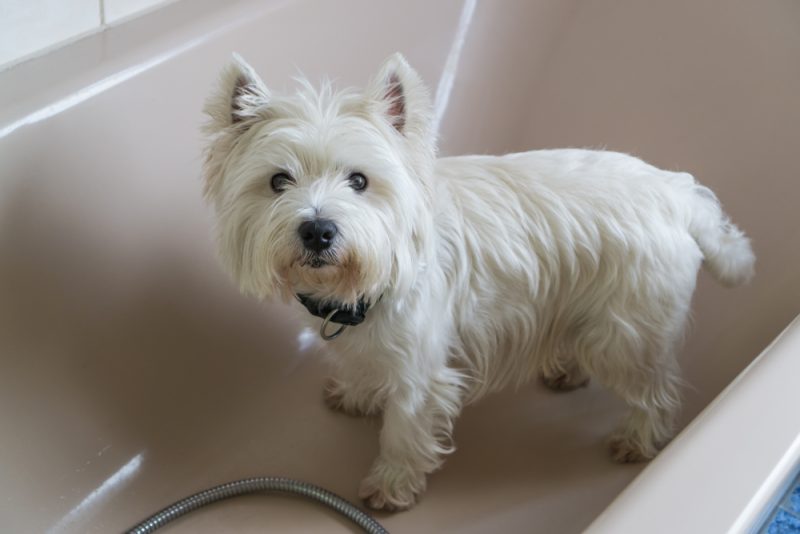
Step 3: Lift the tail
Have your helper lift your dog’s tail to give you better access to the area that requires trimming.
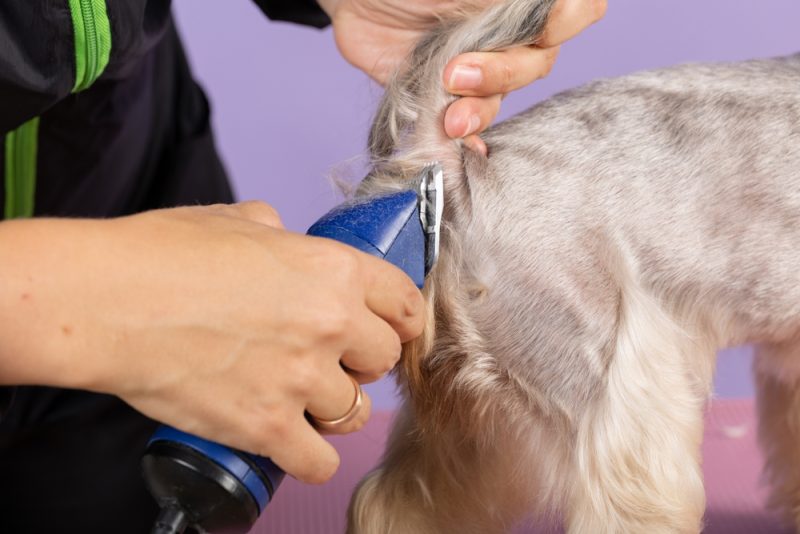
Step 4: Use your clippers
Clip away from the anal opening and push the fur away from the area as you trim. Try not to touch the clippers on your pup’s skin. You can also trim the underside of the tail base around an inch to help keep things neat and sanitary.
If your dog has very long tail fur, use a comb to keep it out of your way while you’re trimming.
Step 5: Clip the belly
Trimming your dog’s belly area can be accomplished by lifting your pup’s rear leg or having them stand on their hind legs. If you’re lifting their leg, be careful to keep it in a natural position by not overextending it or pulling it backward.
If your dog is a male, trim their belly from back to front. Lightly skim the clippers over their fur and take extra precautions around skin folds and body parts. You can trim them to the navel and a bit down their inner thighs.
If your dog is female, you don’t need to clip up to their belly button.
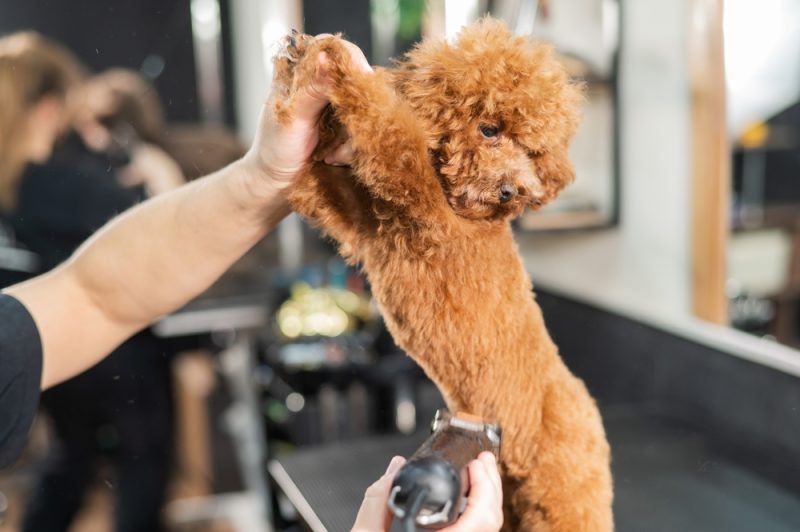

Final Thoughts
Sanitary trims can be a necessity for some dogs, especially those with longer fur or females in heat. However, that doesn’t mean short-haired dogs or males will not require these cuts.
Sanitary trims help prevent the spread of bacteria, keep your pup clean, and ensure your home stays smelling fresh. They’re relatively easy to do from home if you have the right tools on hand and are confident in your ability to handle your pup. However, these trims are part of a professional groomer’s regimen, so yours will gladly tackle the task for you if you’re not comfortable doing so.
Featured Image Credit: BONDART PHOTOGRAPHY, Shutterstock

